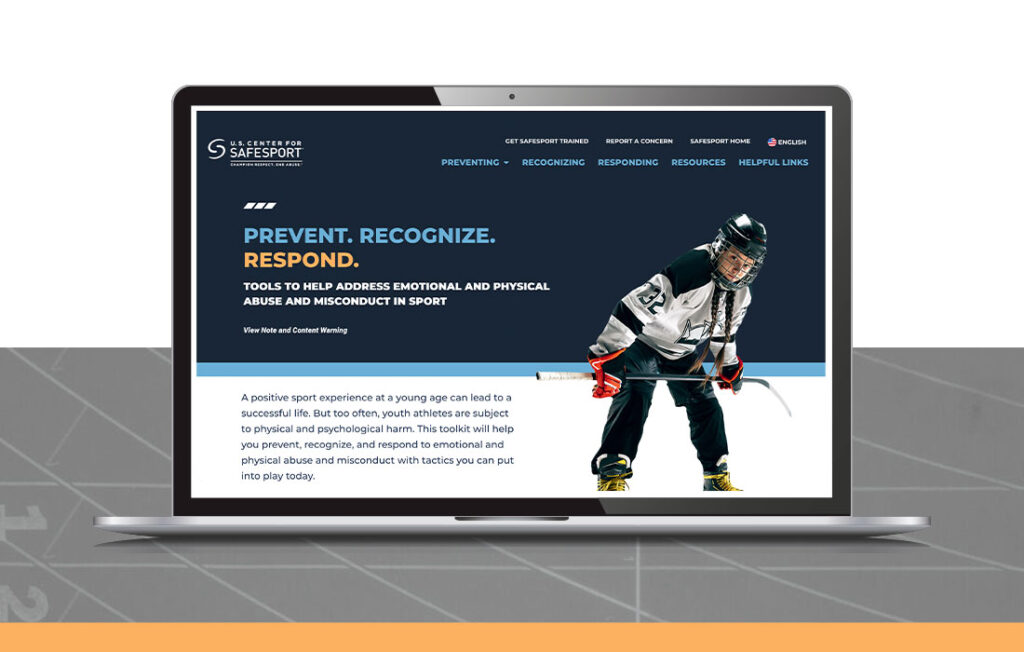Emotional and Physical Abuse in Sport: Our resources are part of the solution

From pee-wee leagues to the most competitive levels of athletics, sport feeds a critical need in us: to play, to compete, to learn, and to grow.
We all know the benefits of sport. The Centers for Disease Control and Prevention says youth physical activity can have lifelong positive mental and physical impacts. Regular physical activity can help children and adolescents improve fitness, control weight, and reduce the risk of disease later in life.1 Participation reduces symptoms of anxiety and depression and builds confidence and self-esteem.
Beyond that, the U.S. Center for SafeSport believes that sport environments should be positive, respectful places where we can thrive, both physically and emotionally. Sport should be safe and free of abuse and other misconduct that can rob us of the joys of play.
Unfortunately, problems seen in society as a whole, including emotional and physical abuse, bullying, harassment, and hazing, can find their way into sport settings and more than offset the positive aspects of participation. Abuse in sport is in the news and has become a top-of-mind issue for athletes, parents, coaches, and sport administrators that demands action.
The numbers are staggering. According to Courage First Athlete Helpline, studies show that between 40% to 50% of athletes have experienced some form of abuse.2 And, far from being a “rite of passage,” bullying continues to be a major problem among youth and a significant obstacle to healthy emotional and physical development. The federal initiative Stopbullying.gov indicates 20%—or one in five—students ages 12-18 experienced bullying.3
“A safe sport environment is one where an athlete can come in and trust they’re in a good environment, they know they can mess up, make mistakes, and learn from them without being criticized, ridiculed, or berated.
They will be encouraged in a positive manner, they will be pushed in a healthy manner. It’s an environment where they can come have fun, work hard, and grow and be who they are in that space.”
Ashlie Rowley
coach, Founder and CEO of Colorado Softball Academy
The U.S. Center for SafeSport was established in 2017 to develop accountability through national SafeSport® policies and abuse prevention education on emotional, physical, and sexual abuse and misconduct within the Olympic and Paralympic Movement. With a mission to support athlete well-being and to end abuse in sport, the Center develops in-depth resources and tools so everyone can learn to create safer sport settings.
The Center’s new Emotional & Physical Abuse & Misconduct Toolkit is one such resource. Created for coaches, volunteers, administrators, and others who work directly with young athletes, the toolkit provides guidance on ways to recognize, prevent and respond to emotional and physical abuse and misconduct.
It defines specific examples of bullying, hazing, and harassment and includes facts on what is considered emotional and physical misconduct. The toolkit also explores powerful subject matter such as the coach and athlete relationship, trauma-informed coaching, and bystander intervention.
References
- Centers For Disease Control and Prevention, CDC Healthy Schools Website, “Physical Activity Facts,” accessed Feb. 10, 2023, https://www.cdc.gov/healthyschools/physicalactivity/facts.htm
- Courage First Athlete Helpline, “I Am an Athlete,” athletehelpline.org, accessed Feb. 10, 2023.
- S. Department of Health and Human Services, “Facts About Bullying,” Stopbullying.org, accessed Feb. 10, 2023, http://www.stopbullying.gov/resources/facts.
